2017 下半年教师资格证高中英语面试真题
第一批
二、考题解析
【教案】
Teaching Aims
Knowledge aim: Students will recognize the liaison in the target passage and memorize
the liaison rules.
Ability aim:
1. Students can work out the liaison rules through listening, pair work and the
guidance from the teacher.
2. Students can apply the liaison rules into practice and express themselves in a
more idiomatic way through imitating, speaking and reading.
Emotional aim : After this lesson, students will be more confident in speaking
English.
Teaching Key &Difficult Points
Key point: Students can master the liaison rules.
Difficult point: Students can apply the rules into practice.
Teaching procedures:
Step 1: Warming up
1. Play the music video Father issued by Guitar Cover and have a free talk about
“the impressive story between you and your father”.
2. Ask the students to think over the question: what have you done for your father.
Step 2: Presentation
1. Ask the students to read the passage on the textbook aloud after the tape and
ask why you can’t catch the speed of the tape. Explain there are some liaisons in
the passage.
�
2. Ask students to circle all of the liaison in the target material through listening
to the tape.
3. Ask students to work in pairs to find out the rules of liaison by classifying
whether a word is ended with a consonant and the following word is initiated with
a vowel.
4. Lead the students to read the liaison after the teacher and tell students liaison
happens when a word is ended with a consonant and the following word is initiated
with a vowel.
Step 3: Practice
Ask the whole class to read after the tape several times and try to imitate, then
some students will be invited to have a competition to read the passage to the class,
and others justify who reads faster.
Step 4: Production
1.Present them another piece of passage and ask them to work in pairs to underline
the liaison inside and try to read it fluently. Afterwards, the standard edition
will be presented.
2.Funny dubbing: a part of the movie Despicable Me is presented for students to
imitate, practice and compete for the best voice actor.
Step 5: Summary & Homework
1. Ask students to summarize and memorize the liaison rules.
2. After class, choose their favorite part from their favorite movie and do the voice
acting job.
IV Blackboard design
�
二、考题解析
【教案】
Teaching aims:
Knowledge aim: students will know more about British coffee culture.
Ability aim: students can catch some detailed information about the passage.
Emotional aim: students will appreciate different culture.
Key and difficult point:
Students will get the general idea of this passage.
Students can express their ideas about the topic.
Teaching procedure:
Step 1: Warming-up
Greet the students.
Have a free talk with them and ask them if they drink coffee.
�
Step 2: Pre-reading
Play them a short video to introduce British tea culture, and fill them in with the
information that Britain has a long history for tea culture to give them some
background information for the passage understanding.
Step 3: While-reading
1st reading: give them 2 minutes to read the passage quickly to get the general idea
of this passage and invite some students to share their answers.
2nd reading: leave the question to them--what is the stereotype and truth about
British people? And give them 5 minutes to read the passage carefully to find the
answers. After 5 minutes, invite some students to share their ideas. And then divide
them into groups of 4 to find the evidence from the text to support their ideas.
Step4: Post-reading
Activity 1: invite two students to retell the passage according the clues on the
blackboard.
Activity 2: divide them into groups of 3 to talk about China food culture.
Step5: Summary and homework
Invite a student to make a summary then leave them the homework-search online for
the development of coffee culture in China.
Blackboard design:
�
二、考题解析
【教案】
Teaching aims:
Knowledge aim: students will recognize the structure and grammar meaning of
appositive clauses.
Ability aim: students will be able to apply appositive clauses in their daily use.
Emotional aim: students will cultivate the awareness of protecting the environment.
Key and difficult point:
Students will master the structure and grammar meaning of the appositive clause.
Students can tell the difference between appositive clauses and attributive clauses.
Teaching procedure:
Step 1: Warming-up
Greet the students.
Have a short review about attributive clause from last class. Then ask students to
compare the two sentences below and lead to the new lesson for the appositive clause.
The news that my father told me yesterday made me cry.
The news that my father won the game made me cry yesterday.
Step 2: Presentation
Ask students to read the above material first, then invite them to share their
understanding about the two “that”clauses. Then try to find the structure with
them together: the two that clauses(appositive clauses) here explain the noun
“doubt” and show the meaning of it. Another example of this is that “The news
that my father won the game made me cry yesterday.”Here, “that my father won the
game” is actually the content of the news. The function of it is not to modify the
noun but to show the content of it which is different from the attributive clause.
Step 3: Practice
1.Find the attributive clause in the material and rewrite it to an appositive clause:
“ it is human activity that has caused this global warming ”---”it is human activity
that we drive too many cars that has caused this global warming”
2.List some sentences on the screen and ask students to tell which are attributive
clauses and which are appositive clauses.
Step4: Production
Divide them in groups of 4 to have a discussion about what can we do to help the
global warming and give them 5 minutes to discuss. Show them an example as:
I hold the idea that promoting the public transportation system will encourage more
people travel less by private cars.
The news that the government is putting money on clean energy is also helpful.
Step5: Summary and homework
Invite a student to make a summary then leave them the homework-search online for
5 common nouns which often appear in the appositive clause.
Blackboard design:
�
二、考题解析
【教案】
Teaching aims:
Knowledge aim: students will master the structure and grammar meaning of passive
voice.
Ability aim: students will be able to speak or write in passive voice.
Emotional aim: students will understand the importance of teamwork..
Key and difficult point:
Students will master the structure and grammar meaning of passive voice.
Students can apply the grammar in their daily speaking.
Teaching procedure:
Step 1: Warming-up
Greet the students.
Show them a sentence: Cambridge University Press published this book. And have a
short review about the active voice.
�
The active voice is the typical word order. We put the subject (the topic or the
theme) first. The subject is the ‘doer’ or agent of the verb. And tell them that
we can also rewrite this sentence into “This book was published by Cambridge
University Press.” and lead to the new lesson.
Step 2: Presentation
1. Take the above sentence as an example, and analyze it with the students together:In
the passive, the person or thing that the action was done to becomes the topic or
theme. We can leave out the ‘doer’ or agent, or we can place the ‘doer’ in a
prepositional phrase (by + ‘doer’).
2. Show the sentence “It is reported that many a house is being built at present
in the disaster area.” and ask them to talk about the two passive forms. And complete
the table with them together.
Step 3: Practice
Then show the sentence “It is reported that many a house is being built at present
in the disaster area.” and ask them to add up the doers in this sentence.
Step4: Production
Ask them to work with their desk mates and to describe their daily activities with
each other. And passive voices need to be applied. And after 5 minutes, invite some
pairs to share their answers.
Step5: Summary and homework
Invite a student to make a summary then leave them the homework-come out or more
examples of passive voice in different tenses.
Blackboard design:
第二批
�
二、考题解析
【教案】
Teaching aims:
Knowledge aim: By the end of the class, students will know some key words about
environment protection, such as suffer form, reusable shopping bags, do harm to and
so on. .
Ability aim: Students’ writing ability of expressing their opinions can be improved
by the end of the class.
Emotional aim: Students will foster the awareness of .protecting environment.
Key and difficult point:
Students will improve their writing ability.
Leading students to think about things beyond their real life.
Teaching procedure:
Step 1: Warming-up
Greet the students.
Watch a short video about pollution and share their opinions about this issue.
Step 2: Pre-writing
1.Tell students we would write an article and the topic is environment protection.
2.Show students a passage and try to find out the bad effects of cigarette and plastic
pollution.
3.Run a brainstorming activity and have a discussion: ask students the question as
follows:
What should we do to prevent the environment protection?
They can change their ideas with their partners. After the discussion, I would pick
�
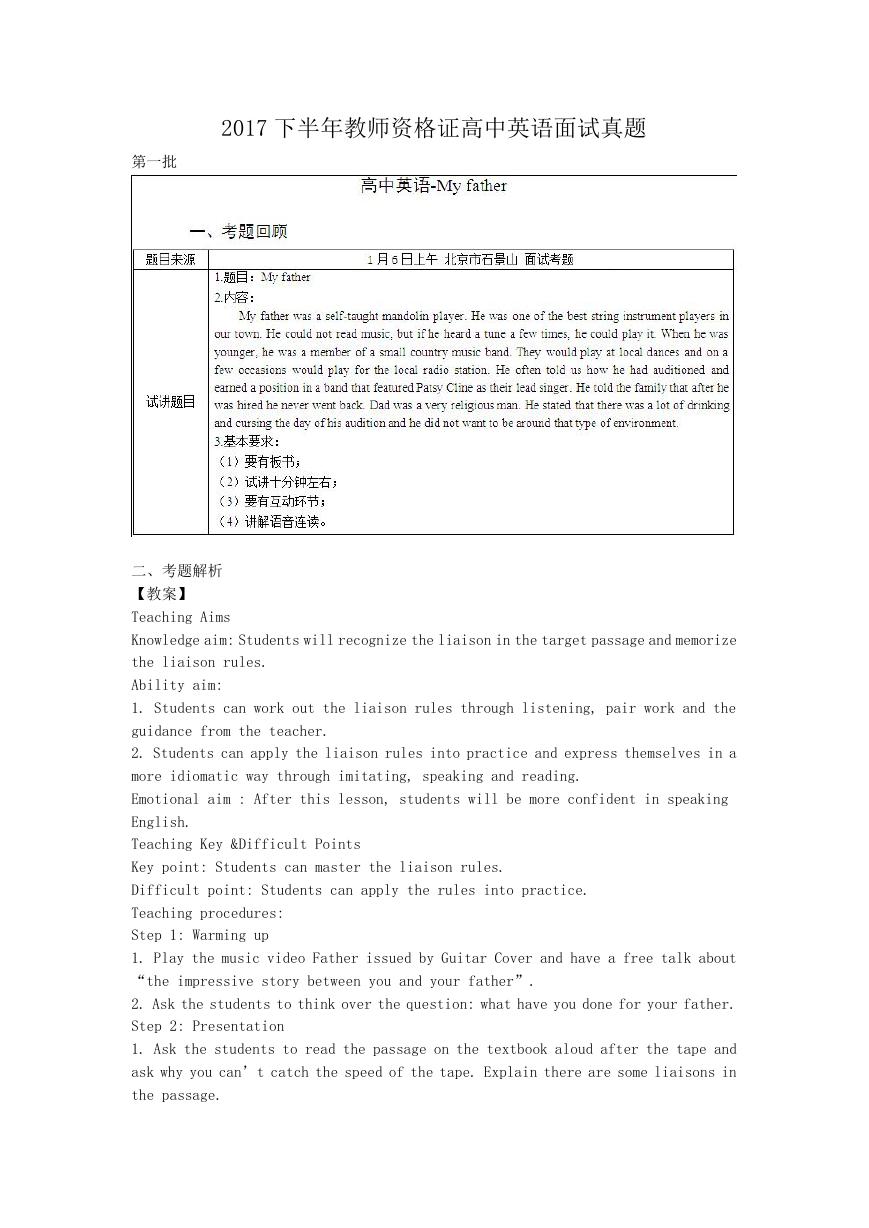
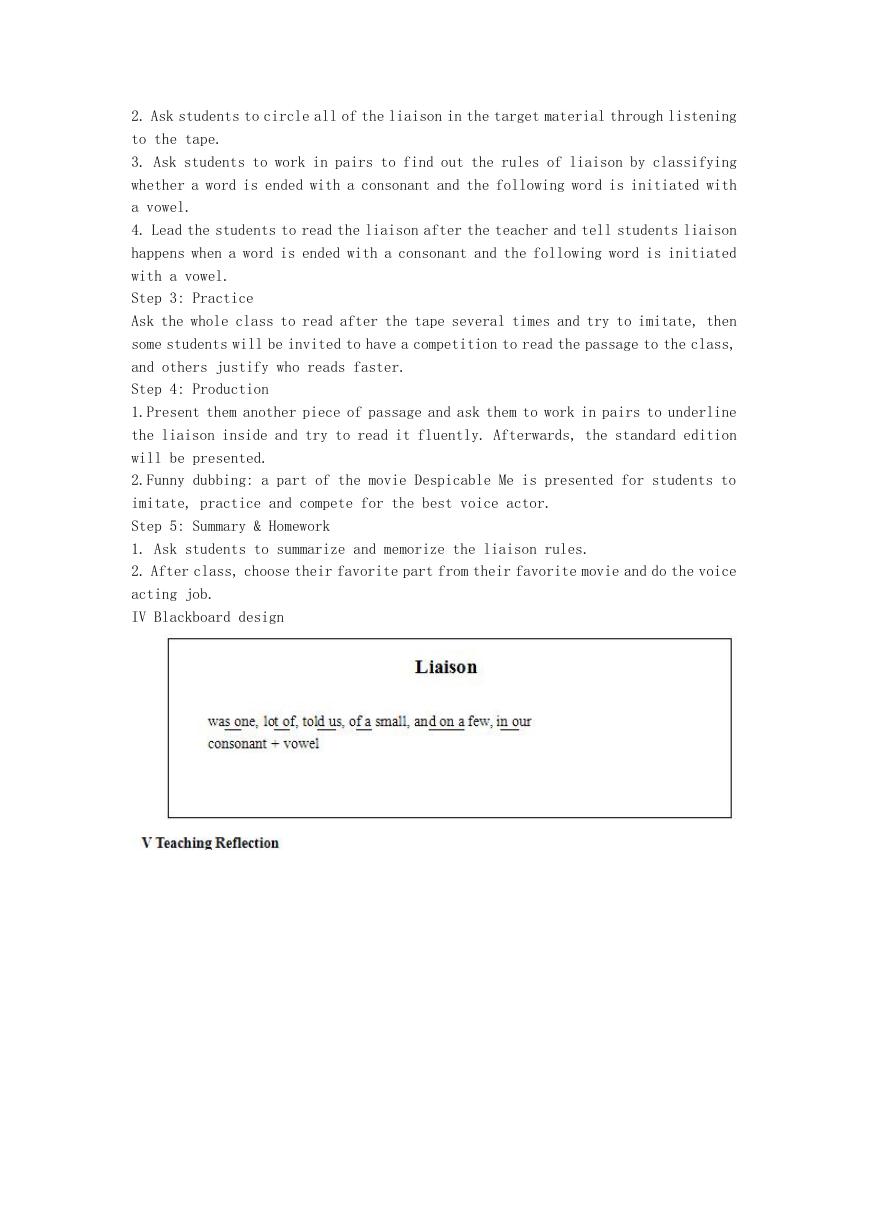
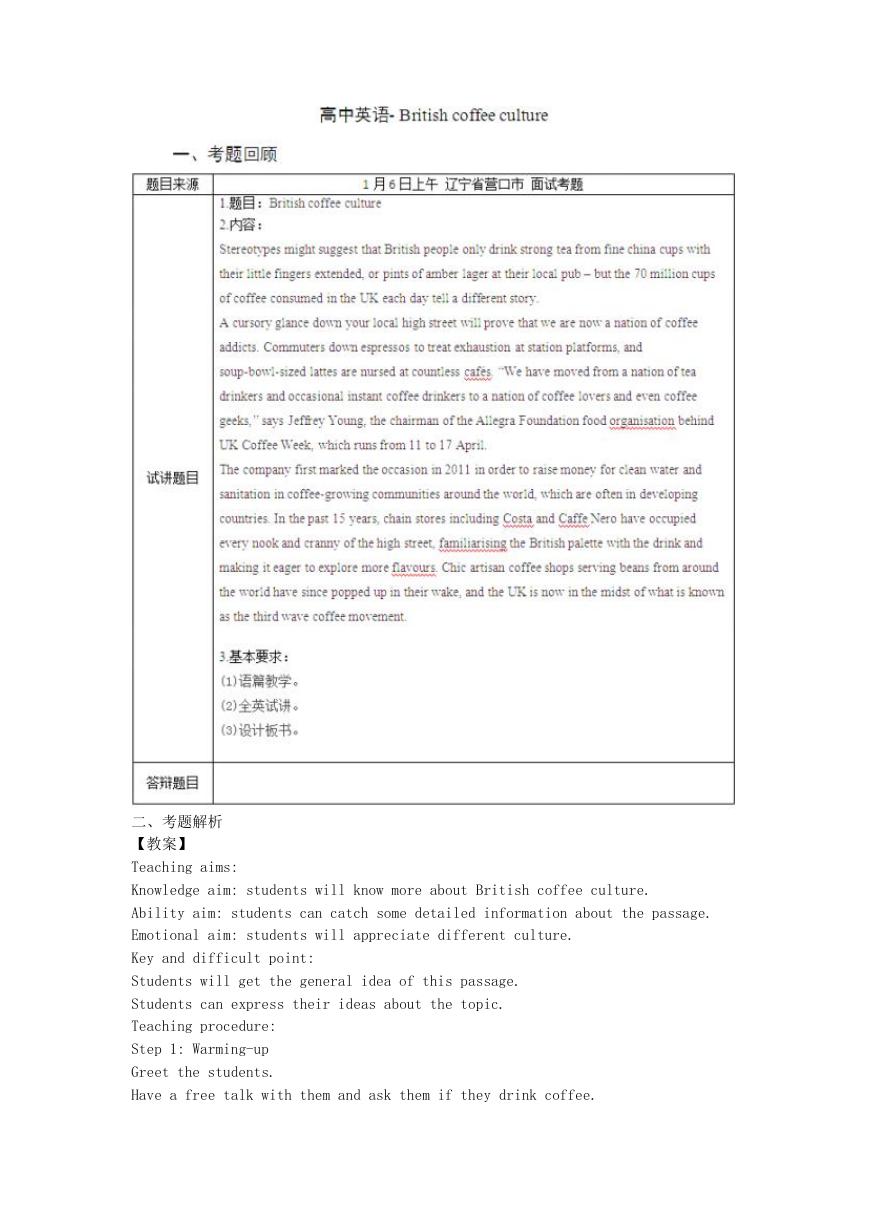
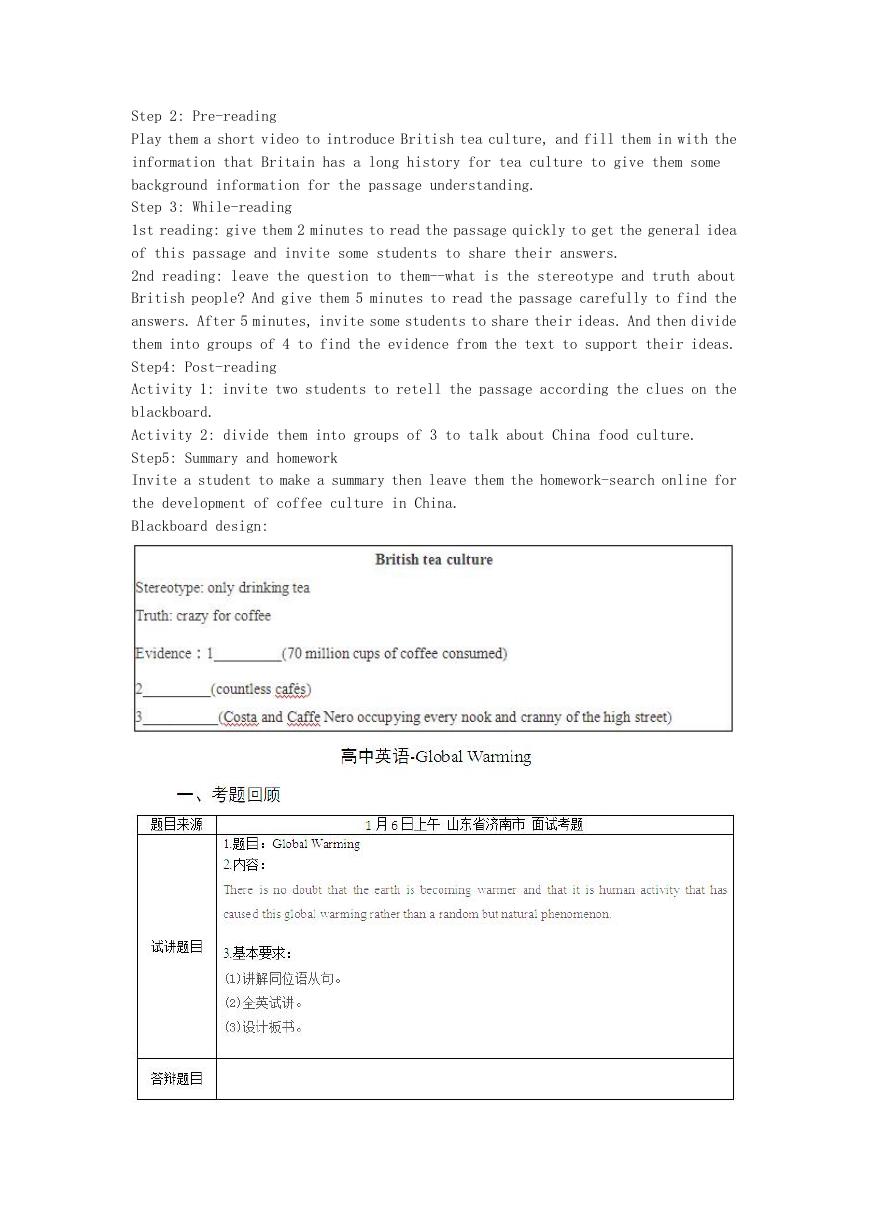
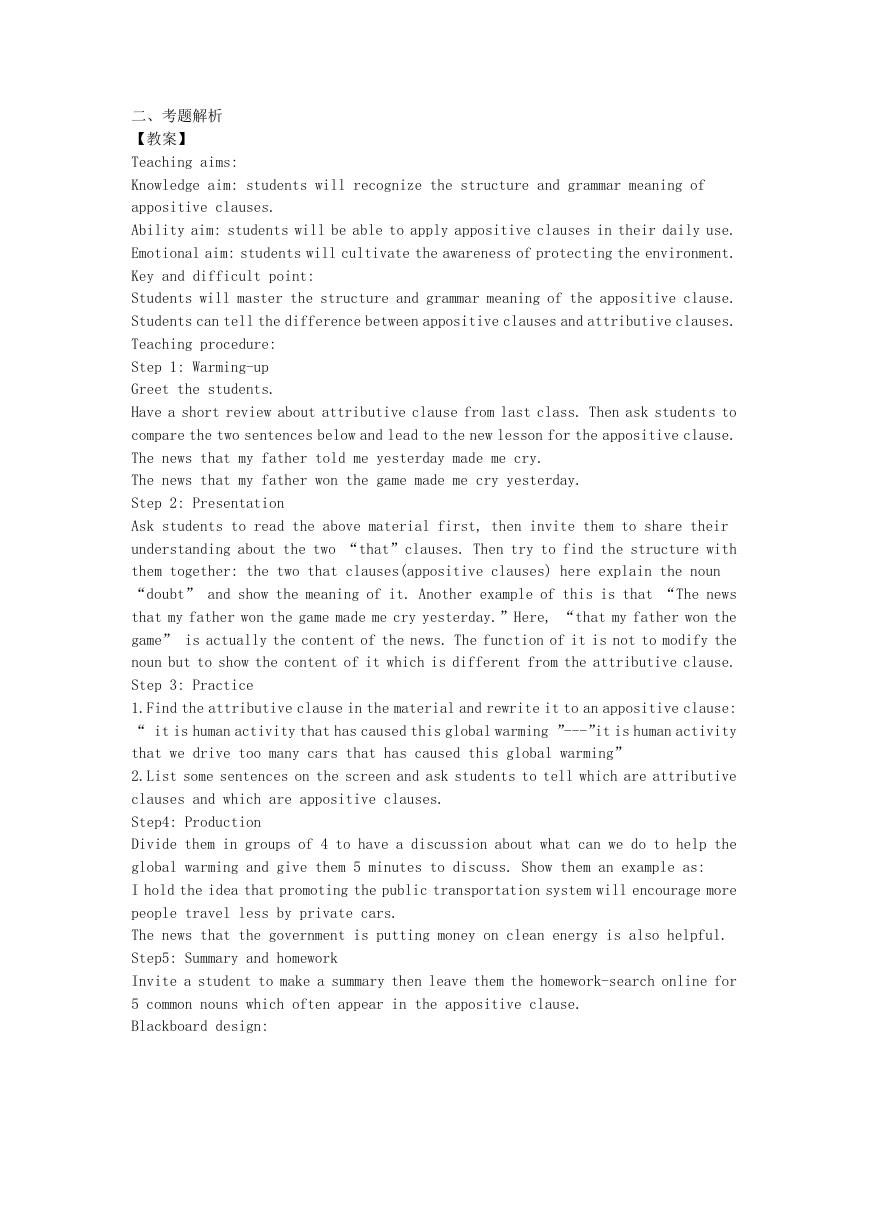
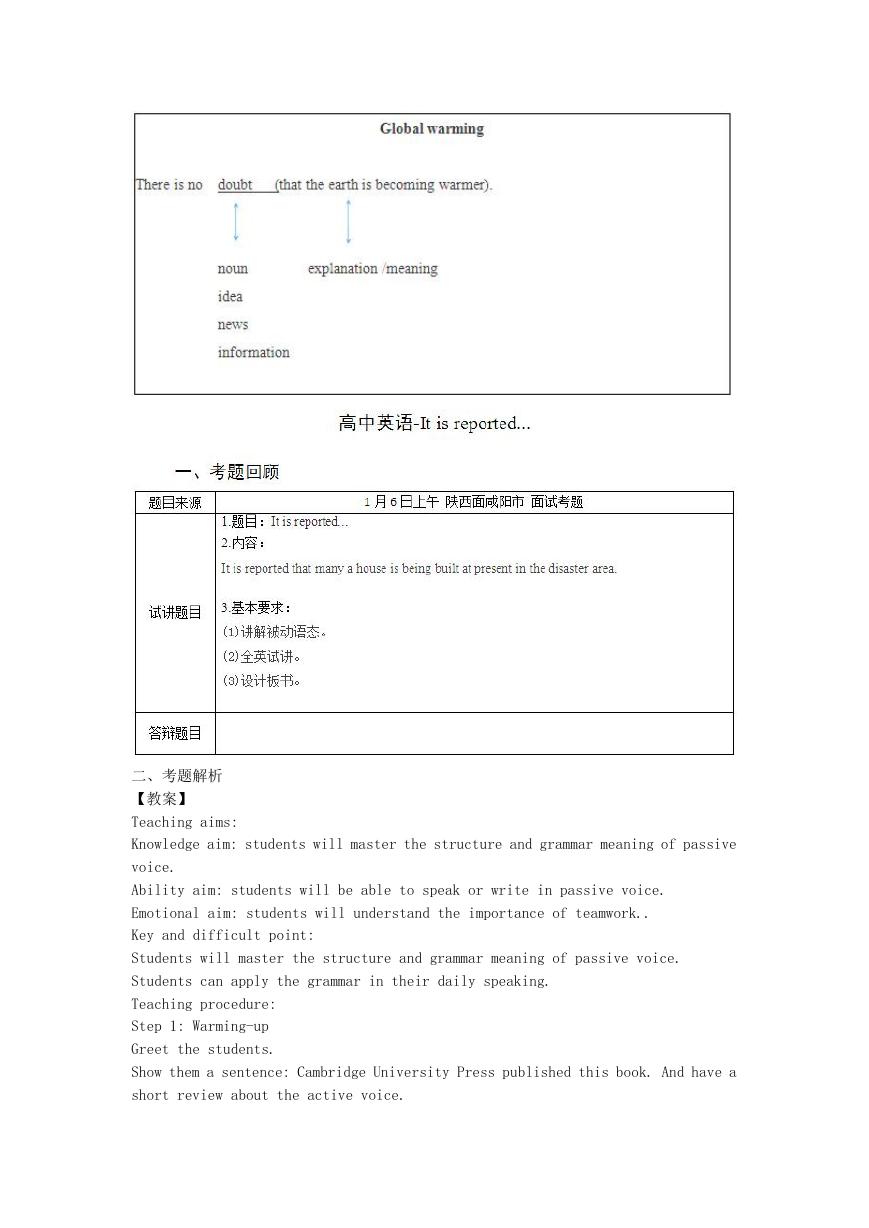
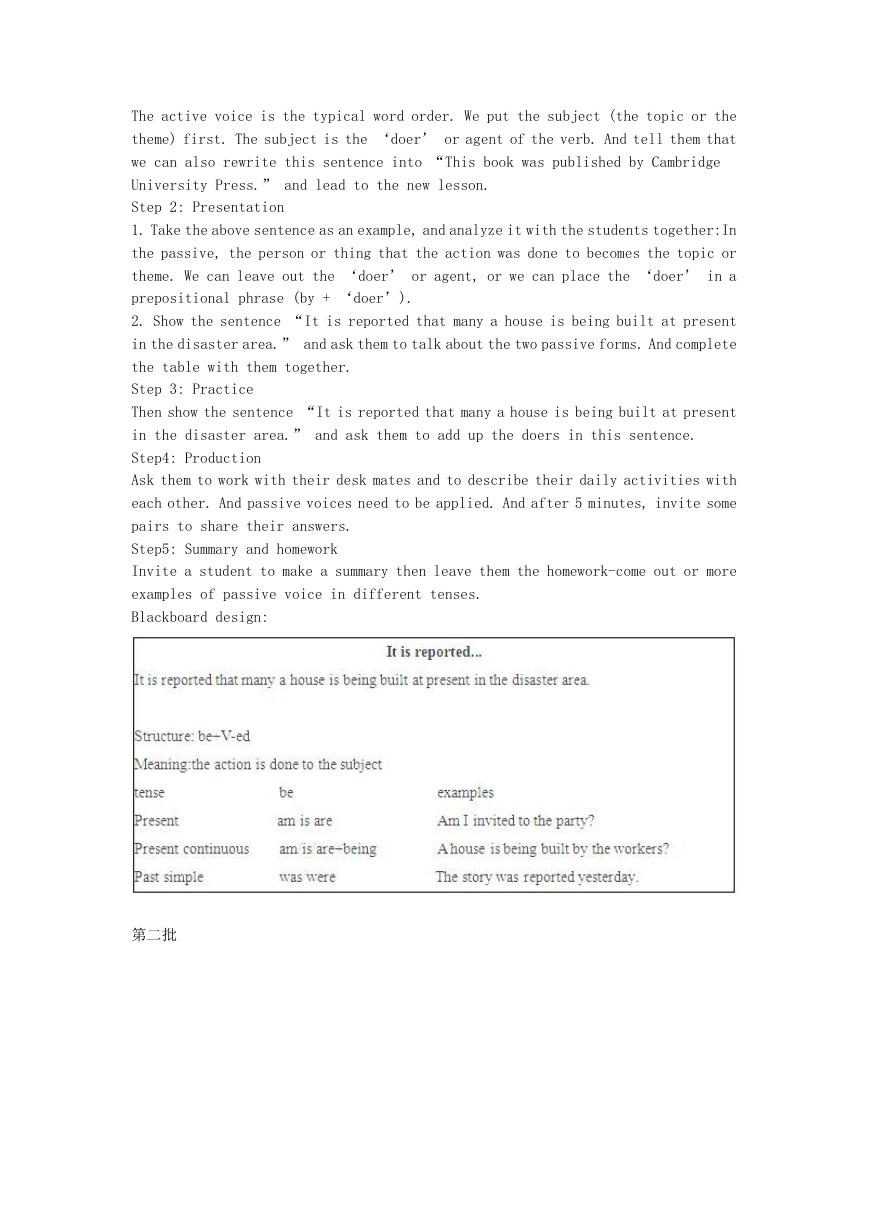
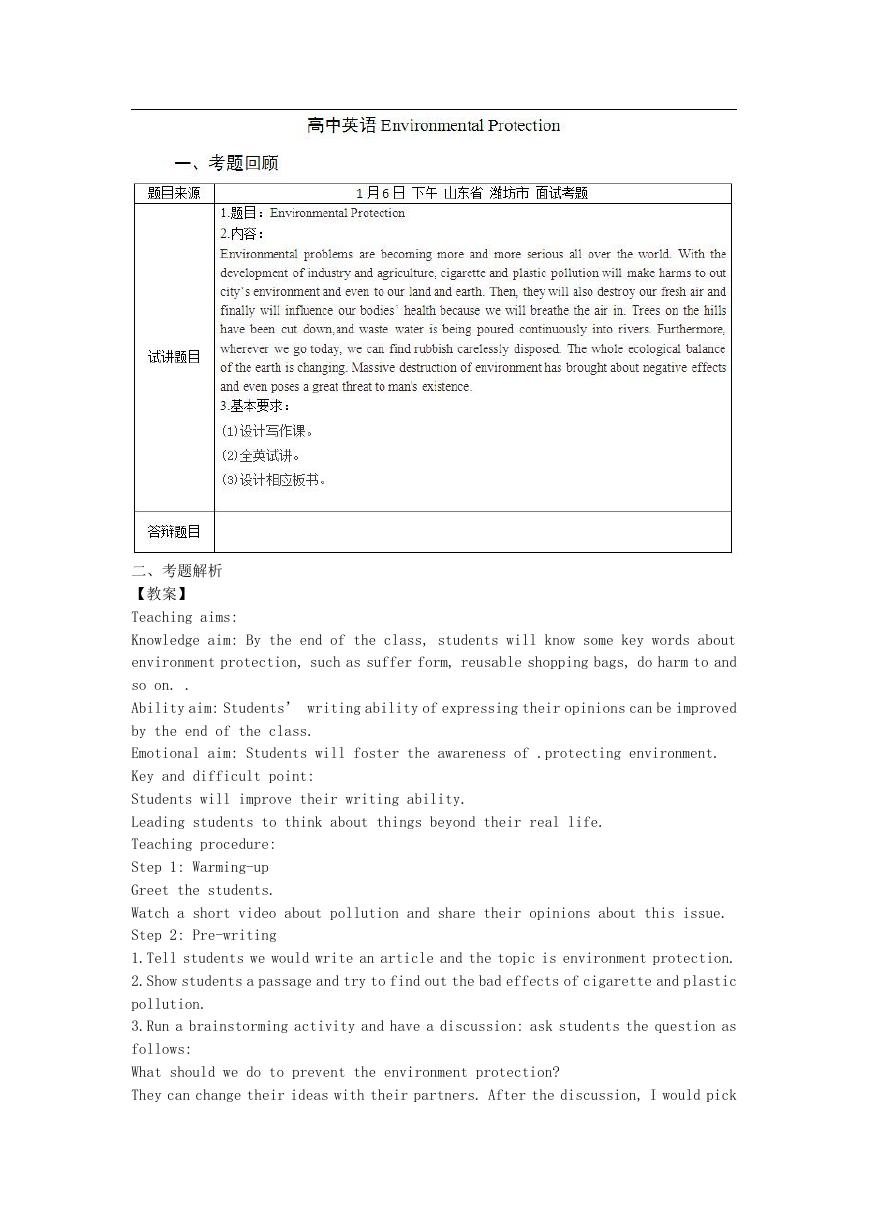








 2023年江西萍乡中考道德与法治真题及答案.doc
2023年江西萍乡中考道德与法治真题及答案.doc 2012年重庆南川中考生物真题及答案.doc
2012年重庆南川中考生物真题及答案.doc 2013年江西师范大学地理学综合及文艺理论基础考研真题.doc
2013年江西师范大学地理学综合及文艺理论基础考研真题.doc 2020年四川甘孜小升初语文真题及答案I卷.doc
2020年四川甘孜小升初语文真题及答案I卷.doc 2020年注册岩土工程师专业基础考试真题及答案.doc
2020年注册岩土工程师专业基础考试真题及答案.doc 2023-2024学年福建省厦门市九年级上学期数学月考试题及答案.doc
2023-2024学年福建省厦门市九年级上学期数学月考试题及答案.doc 2021-2022学年辽宁省沈阳市大东区九年级上学期语文期末试题及答案.doc
2021-2022学年辽宁省沈阳市大东区九年级上学期语文期末试题及答案.doc 2022-2023学年北京东城区初三第一学期物理期末试卷及答案.doc
2022-2023学年北京东城区初三第一学期物理期末试卷及答案.doc 2018上半年江西教师资格初中地理学科知识与教学能力真题及答案.doc
2018上半年江西教师资格初中地理学科知识与教学能力真题及答案.doc 2012年河北国家公务员申论考试真题及答案-省级.doc
2012年河北国家公务员申论考试真题及答案-省级.doc 2020-2021学年江苏省扬州市江都区邵樊片九年级上学期数学第一次质量检测试题及答案.doc
2020-2021学年江苏省扬州市江都区邵樊片九年级上学期数学第一次质量检测试题及答案.doc 2022下半年黑龙江教师资格证中学综合素质真题及答案.doc
2022下半年黑龙江教师资格证中学综合素质真题及答案.doc